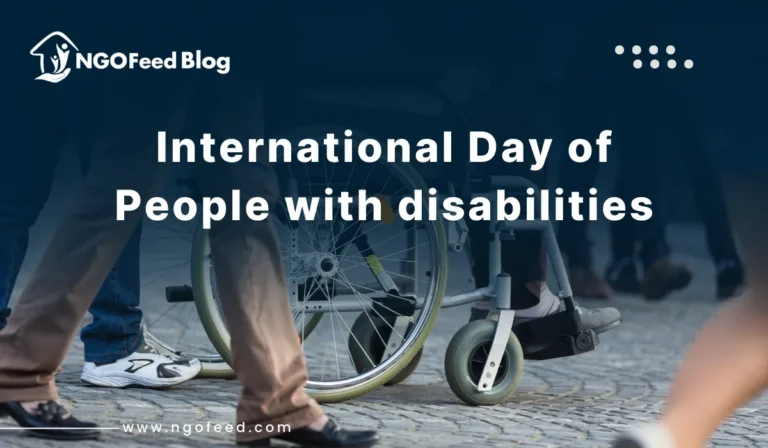Advocacy Vs Charity: Two major strategies frequently arise in the areas of philanthropy and social change: advocacy and charity. Although both arise from a wish to contribute positively, they function at radically different levels and have different goals. It’s essential to grasp the subtleties between them in order to effect significant and lasting change.
At its core, charity focuses on addressing a problem’s symptoms and providing immediate relief. Consider a medical camp providing free health examinations, a donation drive gathering clothing for the homeless, or a soup kitchen feeding the hungry. These generous actions provide immediate help to those in need and directly reduce suffering. Compassion and a wish to alleviate the hardships of those in trouble are frequently the motivating factors behind charity. It is essential for crisis response and for offering a safety net.
Table of Contents
Comprehensive and Systemic Approach
In contrast, advocacy takes a more comprehensive and systemic approach. It aims to address the underlying causes of issues and bring about lasting change through empowerment, policy reform, and public awareness. Advocacy might involve campaigning for living wages, lobbying for policies that tackle food insecurity, or backing initiatives that teach sustainable agriculture practices, rather than simply feeding the hungry. Advocacy aims to alter the institutions and systems that sustain injustice and inequality.
Also Read: Gamification in Volunteering
Advocacy Vs Charity
The main difference between them is their focus: charity addresses urgent needs, while advocacy addresses the root causes. Advocacy seeks permanent solutions, whereas charity offers a short remedy.
- Think about the problem of pollution. A charitable strategy might include planning cleanup campaigns to rid a river of trash. Although this offers quick environmental gain, it does not tackle the root of the pollution. In contrast, advocacy may include promoting sustainable business practices, holding polluting companies accountable, and pushing for harsher environmental laws. This is meant to stop pollution from occurring in the beginning.
- Power dynamics represent another significant distinction. Charity frequently functions on a donor-recipient basis, with those who have the means helping those who are less fortunate. Although this is done with good intentions, it may occasionally uphold a feeling of dependency. However, advocacy frequently aims to enable underrepresented groups to speak up for themselves and take part in the choices that impact their lives. Its goal is to establish a fairer distribution of resources and power.
- It’s critical to understand that charity and advocacy are not opposing forces; rather, they may coexist and support one another. Systemic problems that require advocacy are often seen firsthand by charitable groups. Direct service generates powerful stories and data that can be used to advocate for policy change. In a similar vein, effective advocacy can lessen the demand for widespread charitable action over time.
Also Read: Microdonations for Nonprofits
- For example, an organization that supports survivors of domestic violence (charity) may also promote enhanced funding for support services and stricter legislation against domestic violence (advocacy). Their advocacy activities are more effective because they are informed by their direct experience with the shelter.
- Ultimately, advocacy and charity are both critical instruments for creating a fairer and more equitable world. While advocacy addresses the underlying causes of issues and seeks systemic reform, charity provides immediate relief and shows compassion. It is essential to acknowledge their unique functions and promote cooperation between them in order to develop both short-term and sustainable answers. In the end, the most promise for significant advancement lies in a balanced strategy that fuses the strategic mindset of advocacy with the compassionate spirit of charity.
In the field of philanthropy and social problem-solving, two popular strategies frequently surface: charity and advocacy. Although they both arise from a wish to make a good difference, they function at very different levels and strive for different results. It’s essential to grasp the subtle differences between them in order to effect truly significant and lasting change.
Also Read: Gen Z is the Next Wave of Donors
Charity: Direct Help and Immediate Relief
At its essence, charity involves addressing a problem’s symptoms and offering prompt relief. It prioritizes addressing the immediate needs of people and communities in distress and relieving suffering. Direct service delivery and generous deeds are frequently involved in this.
Consider a medical camp providing free check-ups, a donation drive gathering clothing for the homeless, and a soup kitchen feeding the needy. These are typical instances of philanthropic activities. Charity also includes disaster relief activities, such as providing food, shelter, and medical assistance to people impacted by war or natural disasters. Individual philanthropists, non-governmental organizations, and religious groups frequently have important impacts in charitable activities. Important features of charity include:
- Direct Service: Offering tangible support like medical care, shelter, food, or clothes.
- Needs-Based: Responding to urgent needs and helping to reduce suffering.
- Compassion-Driven: Driven by empathy and a wish to assist those in need.
- Donor-Recipient Model: Typically entails resource transfer from those who have to those who are in need.
- Short-Term Orientation: Usually intended to provide prompt assistance, albeit some philanthropic initiatives may have objectives that are more long-term.
Also Read: How to Manage your Nonprofits Budget?
Advocacy: Empowerment and Systemic Change
In contrast, advocacy takes a more comprehensive and systematic approach. Its goal is to address the underlying causes of issues and bring about lasting change through empowerment, public awareness, and policy reform. Advocacy aims to alter the institutions and systems that sustain injustice and inequality.
Advocacy might include campaigning for living wages, lobbying for policies that tackle food insecurity, or endorsing initiatives that teach sustainable farming practices, rather than just feeding the hungry. There are several ways to advocate, including:
- Policy Reform: Persuading lawmakers, advocating for legislative and regulatory reforms, and affecting governmental choices.
- Public Awareness: Informing the public about a topic, highlighting societal issues, and addressing misunderstandings.
- Community Organizing: Empowering oppressed people, creating grassroots movements, and rallying communities to call for change.
- Legal Advocacy: Protecting rights, seeking remedy for grievances, and contesting unfair legislation through the judicial system.
Also Read: Viral Nonprofit Campaigns for Optimal Impact
- Media and Communications: Using media to influence public opinion, support underrepresented voices, and accountability for leaders.
- Non-governmental organizations (NGOs), social movements, human rights organizations, and community-based organizations frequently engage in advocacy.
- The main difference between them is their area of concentration: advocacy addresses systemic issues while charity meets urgent needs. While advocacy aims for permanent answers, charity offers a short remedy.
Take into account the problem of pollution. A kind strategy might include planning cleanup campaigns to get rid of litter in a river. Although this offers a quick ecological advantage, it does not tackle the root of the pollution. In contrast, advocacy may entail promoting more stringent environmental laws, holding accountable polluting industries, or encouraging sustainable corporate practices. This is intended to stop pollution from occurring in the first place.
Also Read: Tips for Building Long-Term Relationships with Donors
The power dynamics are another important distinction. Charity frequently functions on a donor-recipient basis, with those who have the means helping those who are less fortunate. Although this is done with good intentions, it might occasionally reinforce a feeling of reliance. However, advocacy frequently aims to enable underrepresented groups to speak up for themselves and take part in the choices that impact their lives. It seeks to establish a fairer allocation of resources and power.
The Complementary Relationship Between Advocacy Vs Charity
It’s critical to understand that charity and advocacy are not opposing forces; rather, they may reinforce one another. Charitable groups frequently see the systemic problems that call for advocacy work firsthand. Direct service produces powerful data and narratives that may be used to advocate for policy change. In the same way, effective advocacy can lessen the demand for widespread charitable actions over time.
For example, a charity that operates a shelter for domestic violence victims might engage in advocacy by promoting stricter laws against domestic violence and more financial support for service providers. Their advocacy activities are more effective because they are informed by their direct experience with the shelter. In this manner, advocacy initiatives can be informed by charitable work by:
Also Read: Foundation Vs Charity Vs Nonprofit
Demonstrating the extent and effect of the issue
- Determining the requirements and issues experienced by impacted communities.
- Strengthening ties with underserved communities and boosting their voices.
- Furthermore, charity can be made more effective by advocacy in the following ways:
- Dealing with the underlying issues that charity aims to address.
- Developing a more favorable policy climate for philanthropy.
- Advancing social justice and sustainable solutions.
Also Read: CSR Funding for NGO
In conclusion
Both advocacy and philanthropy are crucial instruments for creating a fairer and more equitable world. While advocacy addresses the underlying causes of issues and seeks for systemic reform, charity provides quick assistance and shows compassion. It is essential to acknowledge their specific functions and promote cooperation between them in order to develop both short-term and sustainable solutions. Ultimately, a balanced strategy that combines the compassionate heart of charity with the tactical mind of advocacy has the greatest potential for real progress. To create a genuinely fair and sustainable world, we need both the persistent voice of advocacy and the helping hand of charity working together to address systemic problems while also fulfilling immediate demands.










